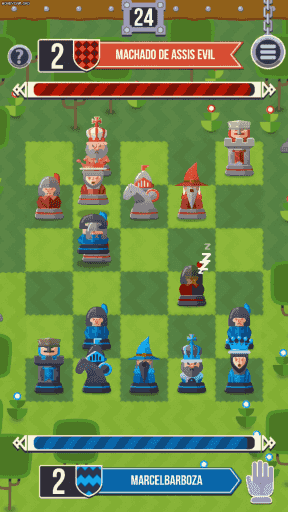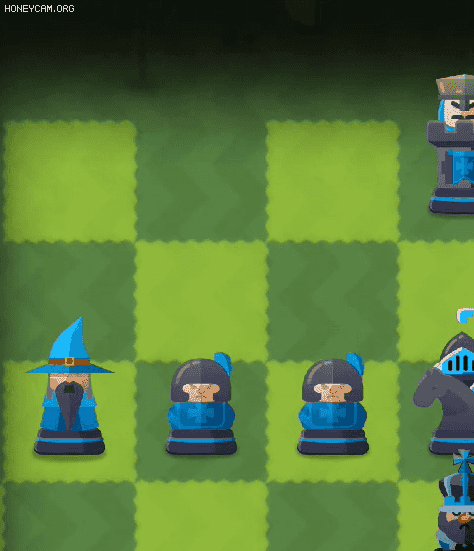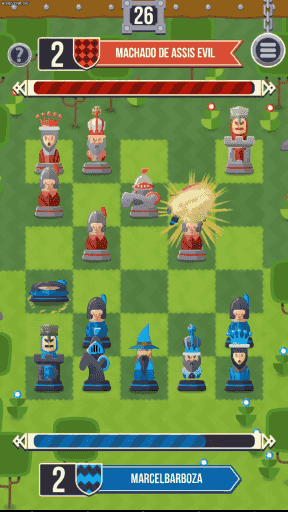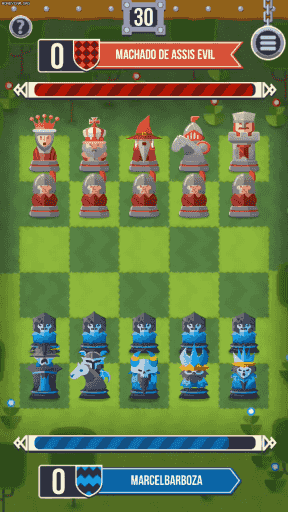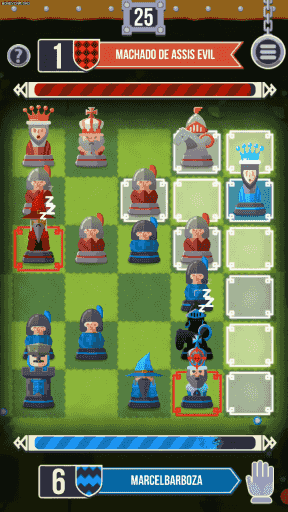this simultaneity creates three problems right away: 1. what happens when two pieces land on the same house? and 2. what happens if a player decides to always move the same piece? 3. there is no checkmate in our game.
the first problem is solved using a known chess knowledge, the material value of a piece. in chess the order of the most valuable piece to the less valuable is: the queen, then the rook, then the bishop and knight, and finally the pawn. these values helps the player to evaluate how to make an exchange, and are tied to pieces. the value is relative, of course, and depends on the configuration of the board. in our game we use this metric, not only to give score for each piece captured, but also to evaluate when two pieces fall in the same house. the most valuable survive, and if they have the same value, both are destroyed.
as simultaneous moves create a dynamic where, if a player chooses to always move the same piece, it can become virtually impossible to catch this piece, as it is always moving. the second problem is solved after a piece is moved, by the piece exhausting itself, and therefore needing one full turn to pass, to be able to move again.

